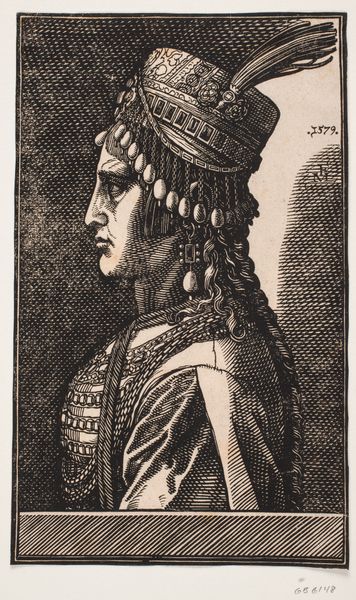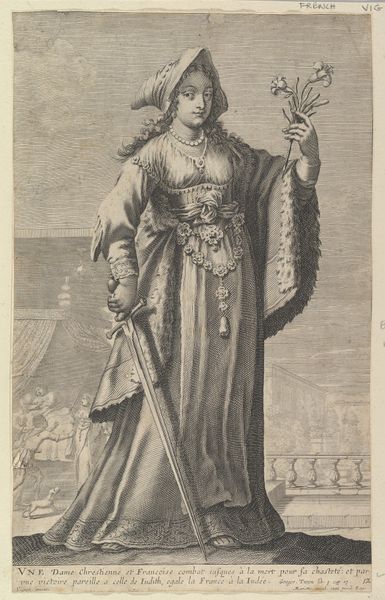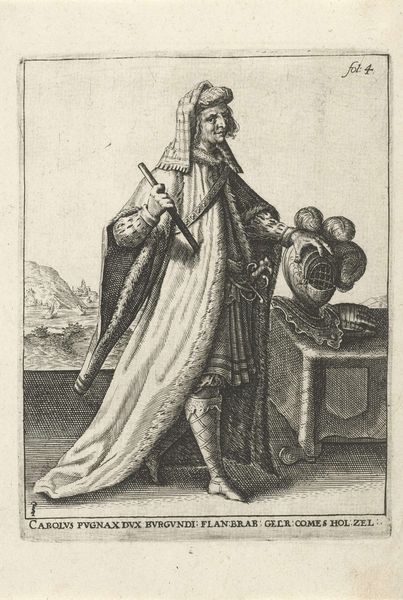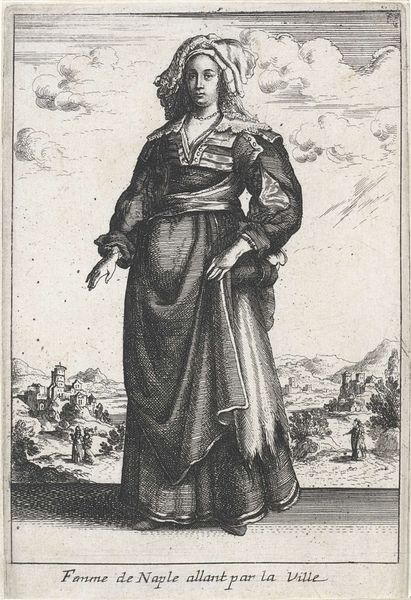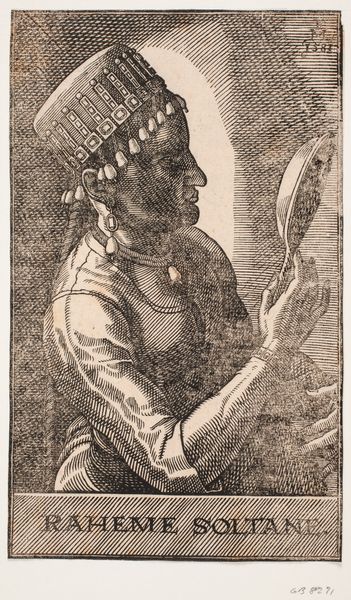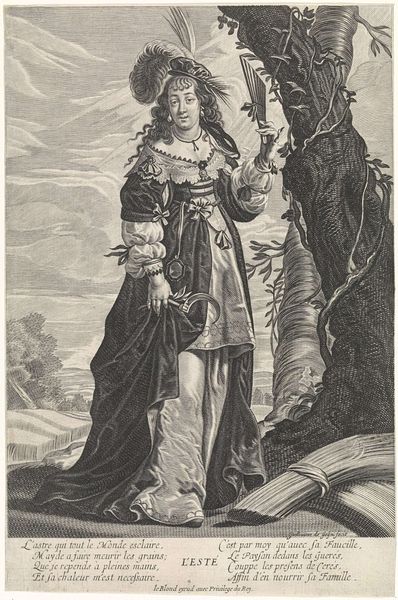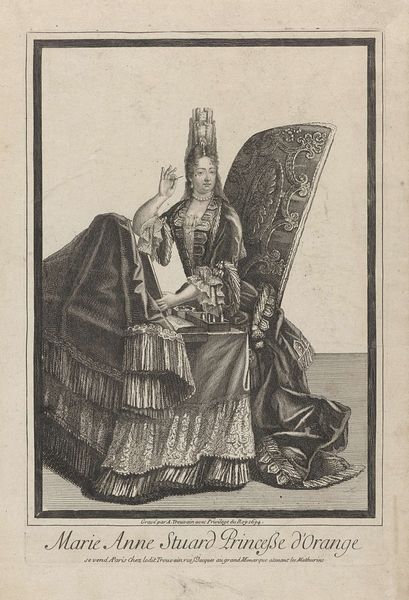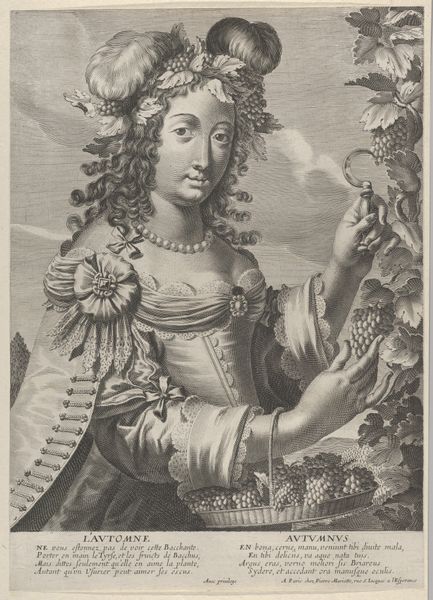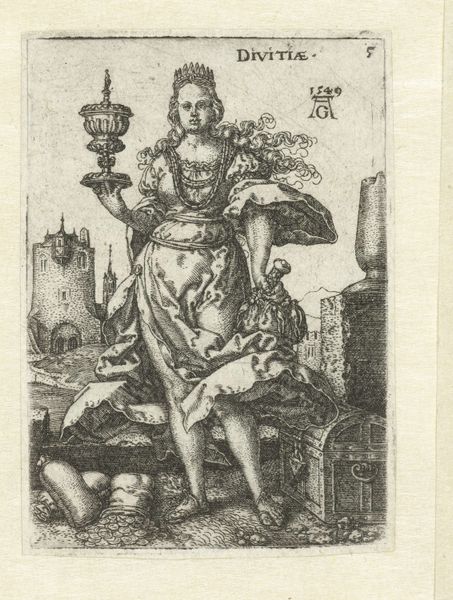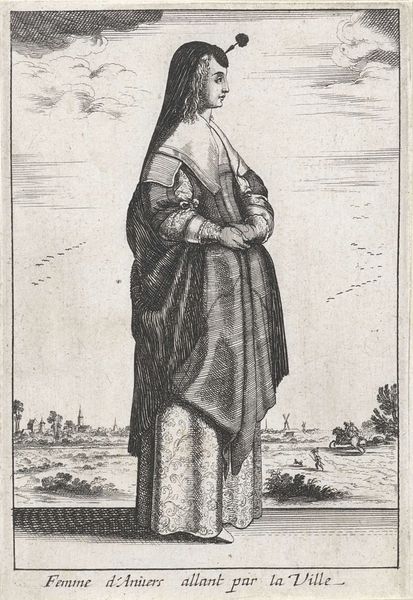
print, woodcut
#
portrait
# print
#
woodcut
#
history-painting
#
northern-renaissance
Dimensions: 240 mm (height) x 149 mm (width) (billedmaal)
Curator: Looking at "Sultana Ruzice," a woodcut created in 1581 by Melchior Lorck and currently housed at the SMK in Copenhagen, I'm immediately drawn into the complex tapestry of power, identity, and representation in the Northern Renaissance. What strikes you most initially? Editor: It’s intense, isn't it? That sharp, unforgiving line work gives her a stoic, almost mournful quality. And the headdress—wow, it's incredibly ornate. She seems very controlled. Do you think she chose to have the roses like that? Like, consciously? They almost feel sad like she knew that there wasn't as much there for her. Curator: I see what you mean. Placing this artwork in the socio-political context, it's fascinating to consider how Lorck, an artist from Northern Europe, portrayed an Ottoman Sultana. We can explore how cross-cultural interactions influenced the artist’s understanding, how Lorck constructs ideas about the ‘exotic’ or the ‘other’ but it's all from a removed gaze, what could have it been like if it were through her eyes? Editor: Exactly, there is no warmth at all to it, you are totally right, there’s this othering. And that stylized sky in the background seems almost like a stage set. Is it real? Is it her real background? Everything seems so precise. It's beautiful but clinical and controlled, I feel, there is a sense of performance and construction rather than something spontaneous about it. Like, I imagine the actual person has much more spontaneity in real life. Do you know much more about her story as Sultana Ruzice? Curator: While specific biographical details remain elusive, Ruzice likely held significant political influence within the Ottoman court, perhaps as a wife or mother of a Sultan. The image serves as a historical document, yes, but one filtered through Lorck’s artistic interpretation, reflecting both a fascination with and distance from Ottoman culture and female agency in non-western cultures. We should dive into who decided that was a portrait of Ruzice in the first place, I wonder... Editor: Right, a document always with a heavy subjective viewpoint! So as we reflect on the portrait, I see it as a dance between power, representation, and the silent stories embedded in her resolute gaze, which is ultimately what it still brings to contemporary audiences today. It begs us to fill in her background. Curator: It urges us to question who decides which histories get told, and from whose perspectives, as the artwork continues to provoke dialogues around identity and cross-cultural representation even today.
Comments
No comments
Be the first to comment and join the conversation on the ultimate creative platform.
